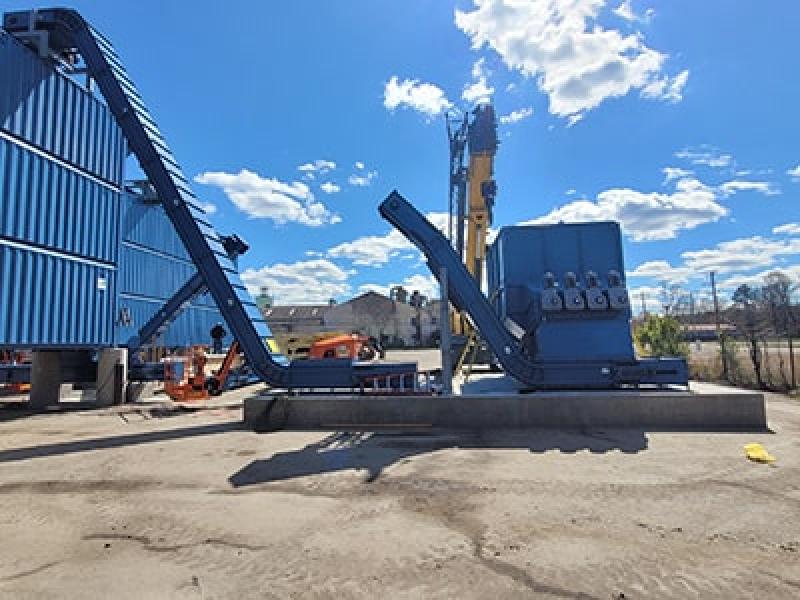
Carbon Streaming Corp. has had a busy year, dramatically increasing its portfolio and beginning to realize the results of its initial carbon credit streaming agreements.
The Toronto-based company, formed in 2020, offers exposure to carbon credit investments.
It works by investing capital in conservation, direct air carbon capture, or reforestation projects around the world in exchange for the resulting carbon credits. Carbon Streaming then sells those credits to buyers around the world, with 80 to 90 per cent of the revenue shared back with the project developers.
Typically, these projects are funded for 20 to 40 years.
“We've added now 19 projects to the portfolio since the beginning of last year (2022). We now have 22 projects in 12 countries around the world," Justin Cochrane, Carbon Streaming’s CEO, told SustainableBiz.
The firm's earliest investments are coming to fruition: "The second (development) would be now getting first delivery of credits, and starting to sell credits and form corporate partnerships, to really help these corporates meet their net-zero ambitions.
“We're expecting delivery from over 10 of those 22 projects in our portfolio.”
In late 2022, the company was accredited by the International Carbon Reduction and Offsetting Accreditation, as well as the International Emissions Trading Association.
Carbon Streaming’s year ahead
As of late May, five Carbon Streaming projects had issued 370,000 credits in total. Cochrane expects that number to be multiplied significantly by the end of the year.
Part of the reason it took so long to realize sales on the investments is the time required to develop the carbon-credit projects.
“The other part is that these projects only tend to issue carbon credits once a year. It's not like you're manufacturing a good that's constantly spitting out new product,” Cochrane explained. “You have to prove that that does take some time. So generally, I say it's 12 to 18 months to prove that model.”
There are also the Enfield and Waverley biochar projects in Maine and Virginia, respectively. The former Enfield pilot facility is expected to remove approximately 90,000 tonnes of carbon dioxide equivalent (tCO2e) of emissions over its 30-year project life. Waverley is expected to remove 161,000 tCO2e over 25 years.
“You're creating this biological charcoal, that's creating up to (a) 1,000-year permanence of carbon. You use that biochar and you can spread it into soil. It helps with water retention and nutrient retention,” Cochrane said. “They're small issuers of credit, so we're only expecting around 10,000 to 15,000 credits from those two projects. But if you looked at the biochar price today, it's about $170 a credit so they're very valuable credits.”
When looking at which projects to invest in, the company aims to find a middle ground between size and impact.
“We’ve got $66 million in cash on the balance sheet. We do see opportunities that are $100-plus million in size, and we don't have the capability ourselves to do those just yet. But I'd say more than that, it's actually the opposite, where a lot of these carbon projects tend to be quite small and they don't move the needle for us,” Cochrane said.
“So we do want to look at investments that are $10-, $15-, $20-million in size. That's kind of the sweet spot for us.”
Carbon Streaming’s projects
In May, the company announced a pipeline agreement with Mast Reforestation, providing up to $19.7 million for a series of post-wildfire reforestation projects in the Western U.S., by entering into separate stream agreements for each project.
The Sheep Creek Reforestation Stream in Montana is the first under the agreement and is expected to remove approximately 225,000 tonnes of carbon dioxide equivalent (tCO2e), restoring more than 2,700 acres damaged in a 2021 fire. The carbon credits are expected to be issued in 2025 and 2026.
The Mast Reforestation projects are to cover more than 9,000 acres and are expected to remove approximately one million tCO2e and generate an equivalent number of carbon credits.
“They have a dominant position in the seedling market in California. So (they’re) vertically integrated and our capital is perfect for them because we help fund the reforestation costs,” Cochrane said. “They partner with private landowners. We help fund the reforestation costs and we get these projects underway.”
It is the first Afforestation, Reforestation and Revegetation (ARR) project for Carbon Streaming, an area it would be interested in developing further. Cochrane noted credits from ARR projects are highly sought after by corporate buyers, but given the amount of time it takes for trees to grow or regrow, there needs to be a higher carbon price for them to be economical.
“That's why actually the Climate Action Reserve, which is one of those (carbon offset) registries, created this new technique of issuing credits. We can issue credits earlier, we don't have to wait for the trees to grow,” Cochrane said.
“We can issue a very conservative number of credits today, and then go out three, four or five, 10 years, look at how many credits we've issued, see how much carbon has actually been sequestered, and then we'll issue the gap later on.”
There is also an opportunity to create an ARR program at Carbon Streaming’s existing Rimba Raya project, a 64,500-hectare peat swamp in Central Kalimatan, Indonesia. It is the largest REDD+ (reduced emissions from avoided deforestation and degradation) project in the world.
Cochrane is hopeful to complete more carbon removal projects, with one caveat.
“We don't want to take technology risk. I love what these people are doing and . . . we need more carbon streaming to provide capital to those projects. But for us as a business (it’s about) focusing on proven, scalable businesses that are on the lower end of the cost curve, because our thesis, of course, is carbon pricing is going to increase over time.”










